Xuanzang is the most famous of China’s Tang-era monk-pilgrims. He has enjoyed an outsize literary impact on the trajectory of Chinese Buddhism and the presentation of Chinese culture within China and abroad. His journey to India and back, subsequent writings and translations, and legacy have been undeniably influential. He was also the inspiration for the (not-too-accurate-to-life) protagonist Tripitaka in the Ming-era classic Journey to the West. Xuanzang’s life and work is now the subject of Benjamin Brose’s new book, Xuanzang: China’s Legendary Pilgrim and Translator (2021), which returns to familiar material but with important new updates.
Brose is no stranger to covering lesser-known historical periods of Buddhism. His book Patrons and Patriarchs (2015 University of Hawaii Press) brought attention to neglected trends of Buddhist flourishing and expansion during the Five Dynasties and Ten Kingdoms (907–79 CE). His new volume returns to a much-covered personage who deserves a prominent place in Shambhala Publications’ new series, “Lives of the Masters,” which aims to offer “lively and reliable introductions to the lives, works, and legacies of key Buddhist teachers, philosophers, contemplatives, and writers.” (vii) Each book unpacks the life and work of historical figures that not only embodied Buddhism’s ideals, but who also pioneered and innovated new ideas that grew to be their own dynamic living traditions. Such traditions were significant enough to shape their own lifetimes, and are recognized today as having bequeathed a vibrant legacy of wisdom and practice to future generations.

There are three broad sections in Xuanzang, each of which is divided into specific chapters. The first, “Life,” highlights Xuanzang’s journey to Bodh Gaya (13–40), his trip from Nalanda back to Chang’an (41–72), and then his time in China (73–104). The second section, “Translations,” is Brose’s translation of selected portions of Xuanzang’s The Record of the Western Regions, as well as other primary texts, such as letters to eminent masters and an account of Xuanzang’s death (105–86). Finally, “Legacy” provides an exhaustive evaluation of the pilgrim-monk’s lasting impact and influence on Chinese Buddhism (187–257).
This final section is especially important as it contextualizes the significance of Xuanzang beyond his doctrinal focus on Yogacara (a school that, from an institutional perspective, did not endure or retain imperial favor for long after his death). It also makes the case that Xuanzang was somewhat of a proto-Buddhist studies figure, noting that he played:
. . . pivotal roles in the transmission, translation, and study of Buddhist texts in the modern era. Men like Cunningham and Stein used his Record and Biography to locate lost Buddhist sites and uncover buried Buddhist art, architecture, and texts. The monasteries and stūpas excavated by Cunningham and the manuscripts collected by Stein helped ignite an interest in Buddhism among the people of Europe and, soon thereafter, in North America. When he was alive, Xuanzang spent more than sixteen years in Central Asia and India with the goal of acquiring texts and teachings that would reinvigorate the Buddhist traditions of China. Twelve hundred years later, his work played a crucial role in introducing those same teachings and traditions to the West. And yet, for all that is known about Xuanzang’s life and work, the ways in which he is portrayed often bear uncanny resemblances to those painting the portraits.
(217)
However, as mentioned above, such an identity was constructed by European Indologists of the late 19th and early 20th centuries, with the long-dead Xuanzang unable to speak for himself. Therefore, certain conceptions of Xuanzang possess sinister and racist undertones that are products of their time. (206–10) However, what everyone agrees on is that Xuanzang’s journey was an extraordinary success, more so than any trip made by predecessors such as Yijing (635–713) or Faxian (337–c. 422). It was very likely an odyssey of great personal trial, suffering, and growth. Brose writes:
The Record of the Western Regions, the most extensive and detailed account of seventh-century Central Asia and India ever produced, is one of the only original works Xuanzang composed. Its historical value is unparalleled, but it was probably a low priority for Xuanzang. The twelve-fascicle text was completed quickly, in just over a year, and Xuanzang never again wrote about his travels abroad, though later generations never tired of retelling (and embellishing) the story.
(76)
Record is relatively impersonal and sometimes reads like an intelligence report. (76) This indicates that Xuanzang’s approach to writing about the regions was detached, professional, and in parts probably based on local hearsay translated into Chinese by his interpreters. He very likely made friends and formed personal bonds, but we do not truly know who these people were or how they related to him. Far more important for his career was his relatively sedentary life after his nail-biting pilgrimage. Chapter three, “China,” provides a comprehensive glimpse into the working life of Xuanzang upon returning to Chang’an and receiving a hero’s welcome from the emperor. Key to understanding Xuanzang’s thinking and translation priorities during this time are the shadows of two overbearing monarchs, both of whom breathed down his neck throughout his ecclesiastic career. The dynamic between Xuanzang and Taizong (emperor regnant when Xuanzang left China) and Gaozong (Taizong’s son) almost resembles that of an office sitcom, with the two bosses taking an excessive interest in their valuable employee’s movements, tracking his every move, and making constant demands of him. As for Xuanzang, he could be a Tang-era protagonist: outwardly at the pinnacle of his career at Hongfu Temple, which was in close proximity to the imperial court, but yearning for the solitude and spiritual purity of Shaolin Temple in the mountains.
The monk-emperor relationship, of course, was much more complex than any fictional trope; Xuanzang did not rise to the top of monastic politics and imperial proximity simply by being a nice fellow. He was a power broker and his organs of influence and leverage are highlighted objectively and insightfully in Brose’s analysis. (82– 85) The relationship between Xuanzang and the laypeople of influence around him was an important aspect of his working life. Xuanzang’s religious career cannot be seen in isolation from lay personalities, especially those who were tied to the imperial court. For example, it was a confluence of relationships with members of the imperial family, high officials, military men, disciples from the gentry and nobility, and other networked individuals that led to the rise of Xuanzang’s prestige and dominance at court. Without the personal relationships cultivated between these powerful people and Xuanzang, Buddhism would not have gained any institutional ground.
Furthermore, the emperors’ attitude toward Buddhism was at times ambivalent, if not outright hostile. While Xuanzang was still on his journey, Taizong tried unsuccessfully to forbid certain Buddhist practices in 631, and then issued a series of edicts that elevated Daoist doctrines over Buddhist teachings, prioritizing Daoist officiants at state ceremonies over Buddhist monks. (89) It was only after his odyssey that Xuanzang managed to turn the tide back in Buddhism’s favor:
After his return, Xuanzang’s erudition, experience, and political savvy won him the favor first of Emperor Taizong and then of his son and later successor, Emperor Gaozong. No other Buddhist monk enjoyed this level of access and influence at court, and Xuanzang felt an obligation to use his position to lobby for greater imperial support for Buddhist monks and monasteries.
(89)
In a twist of fate, this rapid entrenchment of Buddhist interests at court faced a similarly sharp and rapid reversal in the years leading up to Xuanzang’s death. Several years later, when his body was moved further away from the imperial capital to a more distant grave, it was clear that both Xuanzang and the teachings he promulgated had fallen out of favor. (188) This tension between imperial ire and favor haunts the final pages of Brose’s book, wherein he looks at how Xuanzang has been recast as a national hero for China, a trans-national, pan-Asian unifier, and a tourism magnet for India. Like writers and scholars, countries and governments see what they wish to see in the monk.
Xuanzang eventually moved to the mountains, where he hoped to be left in peace. But the emperors, it seems, are not done with him yet.
(257)
Xuanzang is one of those personages in Buddhist and Chinese history who will always enjoy a revered place among Sinologists and Buddhologists. As Brose manages skillfully to highlight, however, his overall position in the pantheon of Buddhist historical figures might not be as simple or settled as we think. There are people of greatness and enduring fame who have had libraries written about them. Xuanzang is one of them, and in this sense Brose’s book joins a distinguished lineage of studies about China’s most famous pilgrim-monk. However, its nuance and depth of thought give it a strong edge over many introductory books to Xuanzang. This is the strength of the “Lives of the Masters” series: it re-introduces familiar names in an updated light, allowing us to revisit these great women and men, while being able to enjoy a different conversation with them.
References
Brose, Benjamin. 2021. Xuanzang: China’s Legendary Pilgrim and Translator. Boulder, CO: Shambhala
Related news reports from BDG
Sublime Wanderings: Buddhist Scholar Plans Video Series to Document the Pilgrimage Path of the Buddha
Archaeologists in China Unearth Sutra Translation by Tang Dynasty Monk Xuanzang
Related features from BDG
Patrons and Patriarchs – Book Review
Sublime Wanderings: Rediscovering the Buddha in the Footsteps of Xuanzang






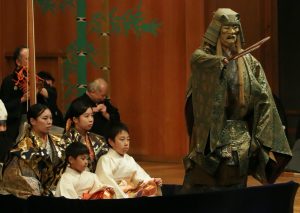




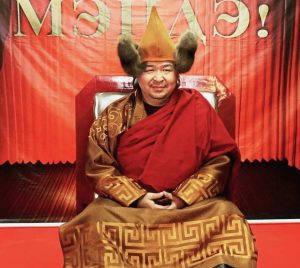
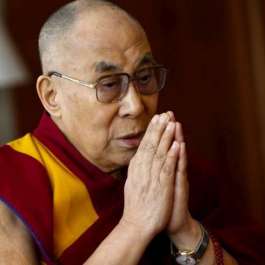
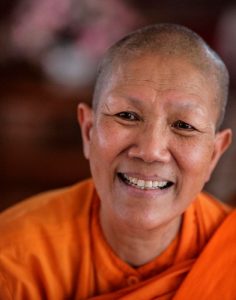
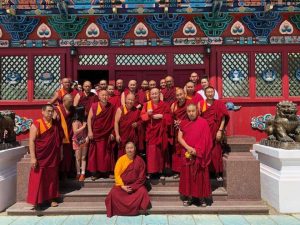
Wonderful book, I will get it for Xmas present!
I would read this book.I have read venerable monks pilgrimage account in local language,bit am confused.
This is great opportunity for me to try to clear confusion.
Venerable monk is the most important ancient monk in India,because lost all buddhist literature we Indians have him to show and autheticate buddhist indian history.